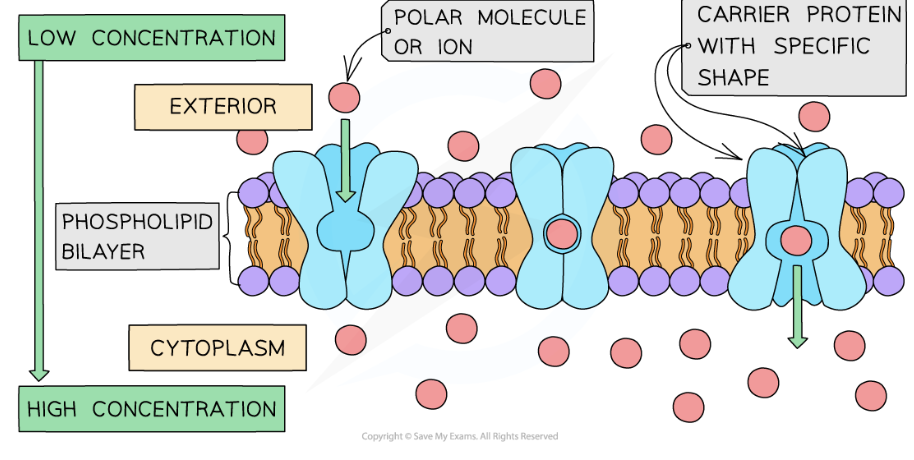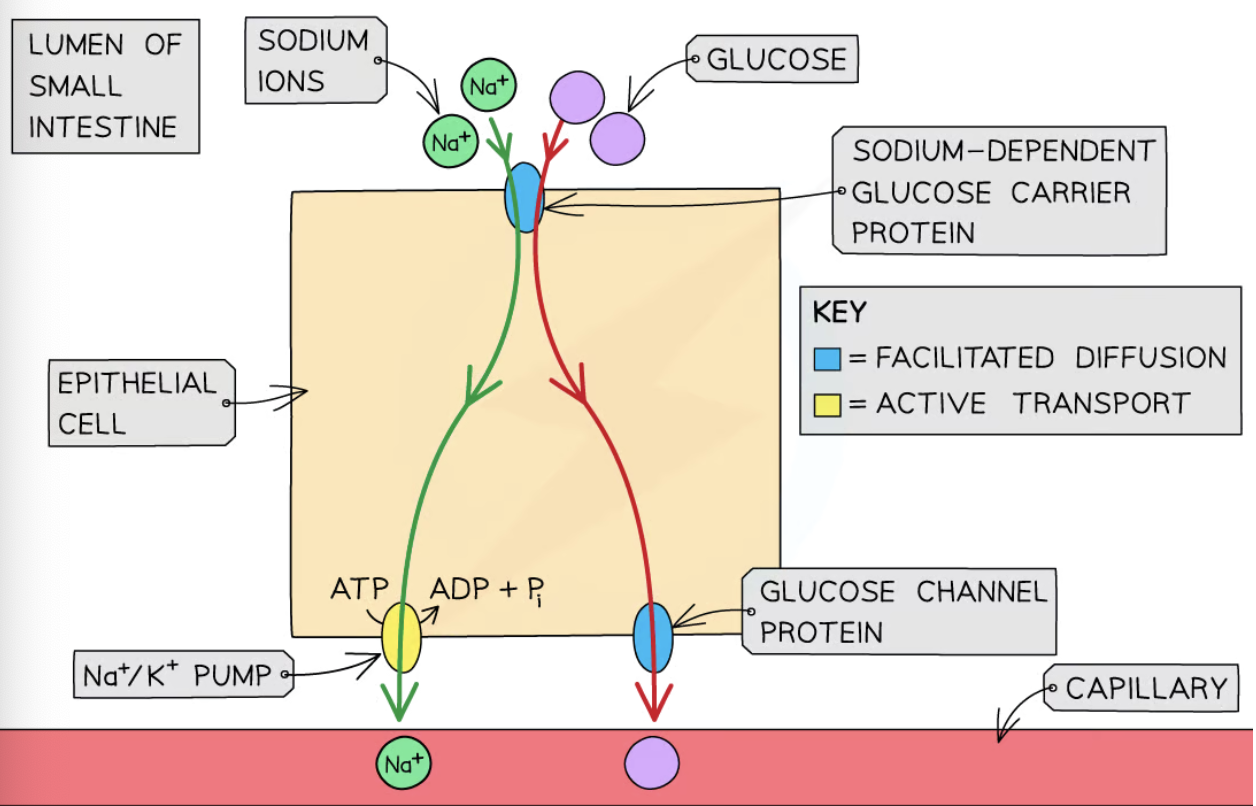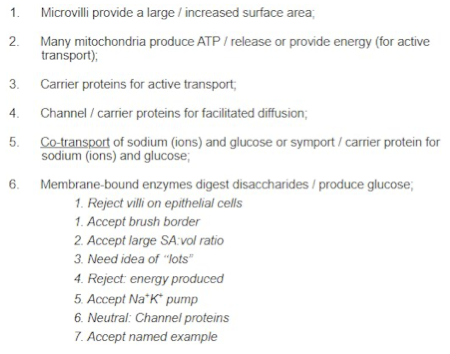Active Transport and Co-Transport
1/4
There's no tags or description
Looks like no tags are added yet.
Name | Mastery | Learn | Test | Matching | Spaced |
|---|
No study sessions yet.
5 Terms
Active transport
The movement of molecules or ions into or out of a cell from a region of lower concentration to a region of higher concentration using ATP and carrier proteins
Requires carrier proteins (each carrier protein being specific for a particular type of molecule or ion)
Energy is required to make the carrier protein change shape, allowing it to transfer the molecules or ions across the cell membrane
The energy required is provided by ATP (adenosine triphosphate) produced during respiration. The ATP is hydrolysed to release energy

Role of Active Transport
Reabsorbtion of useful molecules and ions into the blood after filteration into the kidney tubules
Absorption of some products of digestion from the digestive tract
Loading sugar from the photosynthesising cells of leaves into the phloem tissue for transport around the plant
Loading inorganic ions from the soil into root hairs
Co-Transport
Uses ions to move substances into and out of cells
This occurs particularly in the epithelial cells of the ileum
Na+ and K+ are pumped out of the epithelial cell by active transport into the blood leaving a lower concentration in the cell
This causes these ions to move in from the lumen by facilitated diffusion, which at the same time brings glucose and amino acids into the cell
These then diffuse from a high concentration in the epithelial cell to a low concentration in the blood
Co-Transport Diagram

The epithelial cells that line the small intestine are adapted for the absorption of glucose. Explain how. (6 marks)
